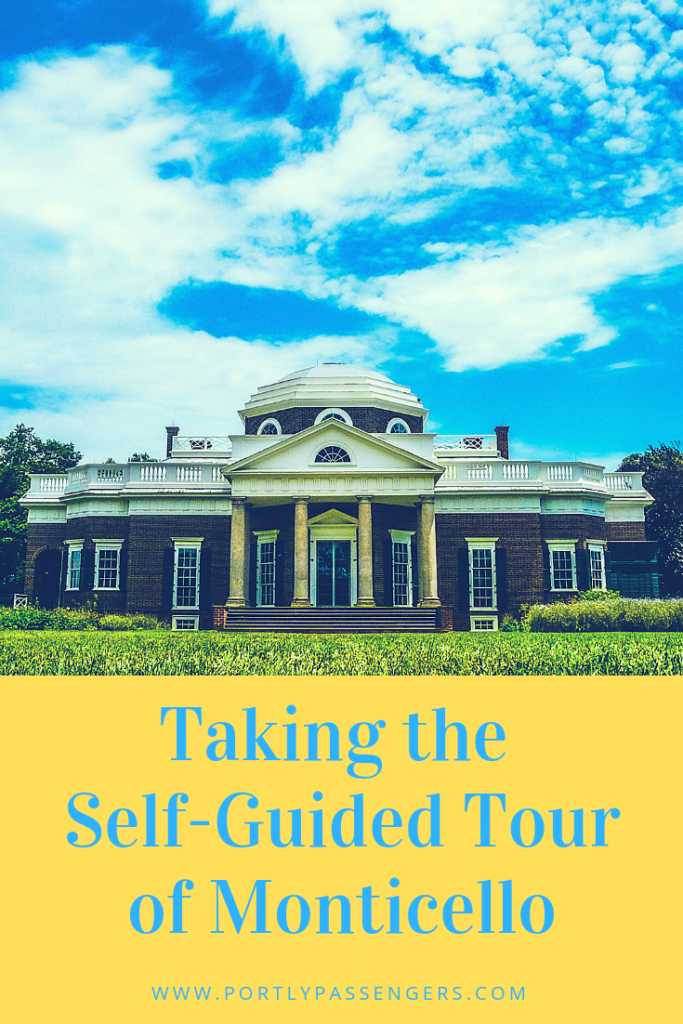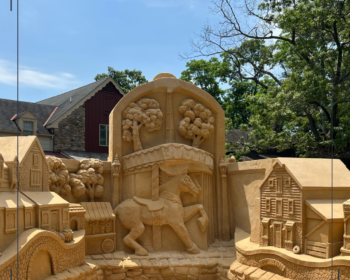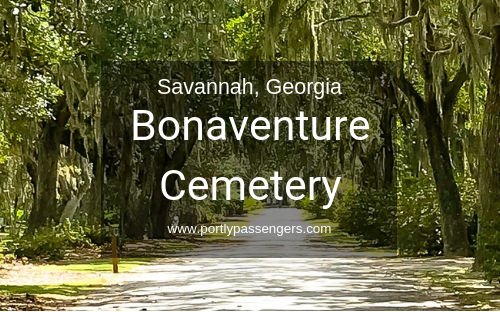Monticello – Home of Thomas Jefferson
We may earn money or products from the companies mentioned in this post.
We arrived in Charlottesville, Virginia the night before our visit to Monticello. Unlike our trip to Mount Vernon, this allowed us to arrive first thing in the morning and combat my anxiety of large crowds.
If you are using a GPS it might inform you to make a sharp left once you have crossed the bridge onto the property of Monticello. DON’T DO THAT! There are plenty of signs to keep you instructed off the pathway and towards the parking lot, but not everyone was aware of this as we watched a few cars turn around.
Once we parked we made our way up to the visitor’s lodge. Here is where you purchase your tickets and then board a bus to head up to the mansion. Before boarding the bus we had the privilege of sitting in with a historical interpreter who addressed questions from the audience about Jeffersons personal and political life along with other varying questions.
The location for this interaction is normally where a quick video shows about the plantation, the mansion, and Jefferson’s life. Like almost all of the historical locations you might visit, videos are great, but this mixture of interaction is by far this girls favorite.
I grew up reenacting at Fort Mifflin in Philadelphia, my father is a historical interpreter himself, so anytime I get to see this kind of interaction within a historical sight pleases my heart. These are the individuals who keep history alive and make it fun for the visitors, they devour knowledge on specific topics to ensure accuracy and dedication for preservation, something I have grown up watching, so if you get a chance to experience this rare option at Monticello, don’t pass it up, it’s unique and interesting.
One of the major difference between Monticello and Mount Vernon, despite both offering multiple visitor packages, Monticello also offers free dedicated tours beyond the house itself for visitors. We, however, opted not to partake in these additional tours and instead decided to roam the site on a self-guided tour.

Self-Guided Tour of Monticello Property
Every guest must enter the house with a tour guide, this is part of your $29.95 ($26.95 online) admissions fee (note the admissions fee changes seasonally). However, you do get the ability to roam the grounds of the plantation beyond your appointed house tour time.
Once you are ready to head over to the house, you board a bus and take a short drive up the mountain to the front of the house where you are dropped off and instructed on which direction to head for certain portions of the grounds. Facing the house from where the bus dropped you off, off to your left you will find the stables, slave quarters, gardens along with the location to meet up with your tour guide.
Since we had about an hour before our tour we headed up the east walk towards the house and off to the left. Our first stop was the textile house, however as we approached there was a sign on the door exclaiming that the shop was closed. Disheartened we headed down the hill towards the stables, passing Hemmings Cabin.
Slavery Tour
The slavery tour starts just outside of Hemmings Cabin, where you will learn about life on the plantation of Sally Hemmings and the numerous other slaves during the time. The tour is offered minimally twice a day, but hours vary. During our visit, the first tour of the day was starting just as we had to line up for our house tour, and not offered again until later in the afternoon. This makes it inconvenient if you only have a short period of time available to tour the grounds (it is recommended to allow 3 hours minimally in your schedule for Monticello). But with that aside there are other locations throughout the grounds to learn about the slavery that happened on the grounds of Monticello.
Hemmings Cabin
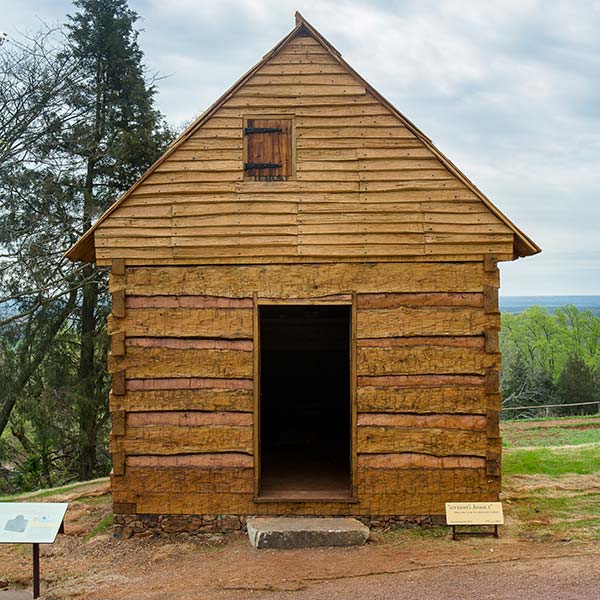
The first being that of the Hemmings Cabin. Built by John Hemmings, it was home to Priscilla and John Hemmings. The cabin is known to be larger than traditional slave quarters on the property, as those who resided in them had closer relationships with Jefferson and his family. As the only standing cabin, it was reconstructed after finding evidence of three dwellings of a similar size through excavation, all of which housed family members of Pricilla and John.
Pricilla Hemmings was the nursemaid to the Jeffersons grandchildren and John Hemmings was a woodworker (joiner) for the Jefferson property. It is known that because of their closer relationship with the family, John and Pricilla were provided with opportunities to earn additional money and have access to goods that other slaves did not.
It might seem as though the Hemmings had it better off than other slaves on the property because of their relationship with Jefferson. One question I throughout the tour of the grounds was about the relationship of the Hemmings. As it was noted on many of the placards involving educations of the Hemmings, the relationships were never defined. Walking away from Monticello left me curious in which I started to do my own research.
Quick Understanding of who the Hemmings are…
Both John and Sally Hemmings are siblings, John was the 11th child of Betty Hemmings. Sally, more famously known, was one of six biracial children born to Betty, fathered by her master. Betty’s master, John Wayles, was Martha Jefferson’s father, making Martha Wayles Jefferson half-sister to Sally and John Hemmings.
Betty Hemmings, Sally and John’s mother, was biracial as well. Born to an enslaved woman named Susanna, Betty was fathered by Susanna’s white master. Majority of the children born from the slave and master relationships had fair skin and light-colored hair compared to others enslaved during the time period. It is believed because of this distinction in looks it provided the Hemmings with more desired features; as it is believed no Hemmings family member had ever worked in a field for any of the masters.
Sally Hemmings Room
Monticello tour guides do talk some about the relationship of Sally during the house tour, but to gain a better understanding you have to step into the Sally Hemmings Room.
If you have 5 minutes take the time to visit Sally Hemmings room, located on the left (south pavilion) of the house. As you walk into the room you are greeted by stone walls and a figure form that represents Sally. Here you will get to watch a short movie about Sally Hemmings, her relationship with Jefferson and read quotes from her children.
Warning, there are only a few seats in the room, so be prepared to stand if it is crowded.
The Gardens
A prized possession of Jefferson was his gardens that sat on the south and west sides of the house. If you head towards the west lawn and meet just under the tree by the fish pond you can join one of the garden tours that happen throughout the day.
We unintentionally became part of the garden tour for a small period of time while I was taking some photographs. The majority of the tour guide information provided was about each individual flower. As I worked on my photography I listened as she talked about the lavender and sweetpeas that lined the path of the west lawn. While I stayed behind to capture some images the tour moved forward, however, I found no reason to continue in the herbology lesson beyond what I could hear from where I was standing.
Monticello – The House
I love how historical properties all have names; I wish we still did this in today’s world but I’m pretty sure it would be weird to name our condo something like Kingston Estate. But with the history of naming, it really only happened with the rich and well, we are far from that so, “corner unit” it is.
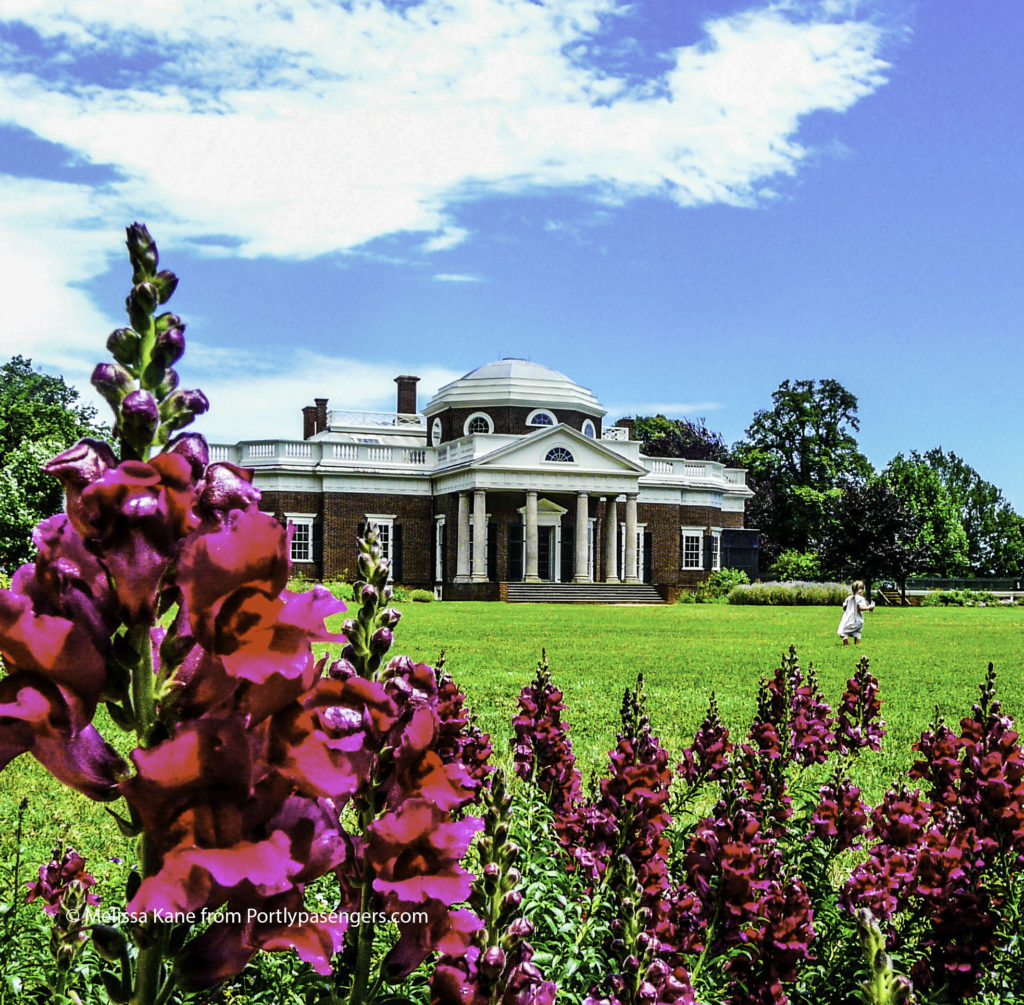
Jefferson named his home after learning Italian at a young age. He inherited the land from his father and spent over 40 years designing and redesigning the home. Upon entry of the home on the east side of the house, you enter into the Entrance Hall which was wide open and full of artifacts from Jefferson’s many interests. The artifacts range from a wall of Native American artifacts sent to him by Lewis and Clark, the upper jaw of a mastodon and a great clock that can be seen from both the inside and outside of the house.
From here you take a tour around the house moving from the library to Jefferson’s bedroom towards the dining room. The architecture and design are quite unique to the times. All of the working portions of the house are hidden beneath the building where you can walk from one side to the other. There were things like wine elevators and the ultimate lazy susan of a door for entertaining purposes.

What you might find interesting about the design of the house, is that Jefferson does not waste space. What looks like open space above his bedroom with the high ceilings is actually a closet. Unfortunately, the tour does not allow guest to enter onto the top floors of the house, to which you do not get to experience the true architecture designs Jefferson poured over. But you do get to experience the greatness from the west lawn.
Iconically known by the engravement on the US nickel, the doom is actually the back of the house. Within the doom sits the Parlor that overlooks the west lawn. This was the place in which Jefferson entertained guest and many times would extend his dinners into this room with small folding tables. The room houses multiple portraits of iconic individuals throughout history from Ben Franklin and Washington to Salome Bearing the Head of St. John the Baptist.
Jefferson’s desire for fine taste did not go overlooked even after he passed away. Buried on the property just half a mile from the house sits the bodies of Jefferson, his daughter, and many other relatives to the house. Jefferson died on July 4, 1826, found dead in his bed. His cause of death is likely from a combination of different ailments among old age as well.
Once outside of the home you have the ability to make your way towards the north pavilion. Here is where your house tour will end. But if you make your way down the stairs and turn right you will find a small cafe that sells the famous Monticello Root Beer, coffee, ice cream, and other snacks. Next to the cafe, you will find the only public restroom on the property. Outside of the cafe and restrooms, there were a few tables set up for children to play with while mom and dad can take a few moments to rest.
The entrance to the north cellar passage can be found on the opposite side of the icebox, a round cylinder that upon the first inspection looks like a prison cell. Here you are able to walk from the North and South end of the property while learning about the under workings of the house that helped Jefferson provide an image for the guest that he desperately wanted to impress.
Jefferson Family Cemetery
Ancestors buried their loved ones directly on the land they resided back in the 1700 and 1800s. This can be seen with the burial site of Rachel Levy, the mother of Jefferson Levy the businessman who purchased Monticello after the death of Thomas Jefferson.

Located on Mulberry Row it is the first marked gravesite visitors meet while exploring the plantation. Mulberry Row takes you down towards the Jefferson Family Cemetery were Thomas, Martha (his wife), Martha (his daughter) and many of his other descendants now rest. The cemetery is bordered by a large black painted fence with the family emblem embodied in gold marking the cemetery gates.
Unlike our experience at Mount Vernon, there was no fanfare at the cemetery. Although surrounded by curious individuals the location was rather peaceful, hidden under the trees of the forest. As this cemetery is still used by the Jefferson family, visitors are not allowed to enter into the cemetery itself.
Once at the cemetery, you can either continue on the trail to find your way back to the visitor’s lodge or you can wait for the shuttle bus that dropped you off at the house earlier in your trip. Because of a back injury I was suffering we opted to wait for the shuttle bus, however, despite them advising a bus every 5 minutes, each time a bus came by it was full of visitors looking to leave the main house section. Overall the wait wasn’t long and despite it being hot and humid, the benches to wait were covered by trees providing nice shade.
The Visitors Lodge

As I mentioned before the visitors’ lodge has a movie that gives visitors a chance to learn about Jefferson, but if you are lucky like us you might get a chance to interact with a historical interpreter instead of the movie. The visitors’ lodge also has a small cafe where many opt to have lunch, bathrooms, and the gift shop.
***
Restrooms
There are two restrooms on the property of Monticello.
- Visitors Center
- Under the North Pavillion on the top of the mountain
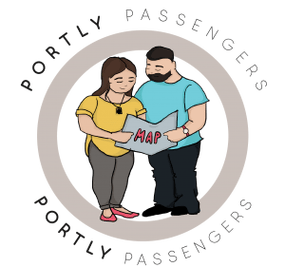
The Portly Passengers provides plus size inclusive travel tips and advice for anyone who is looking to explore the world. From seat sizes on airplanes to exploring museums, restaurants, and nature Melissa & Peter have the experience and stories to help guide you through it.



